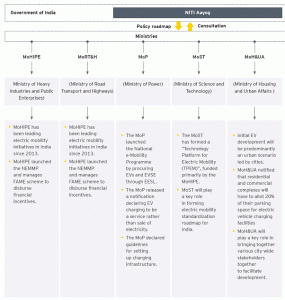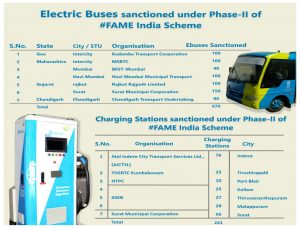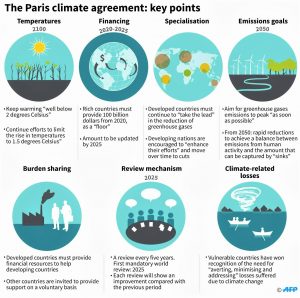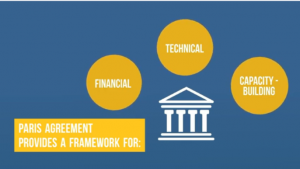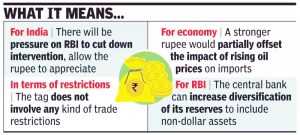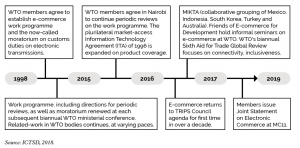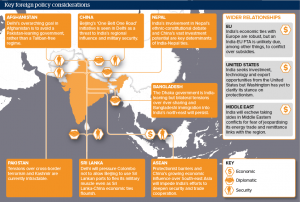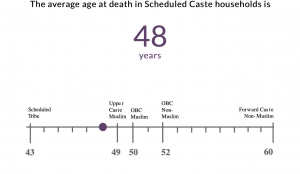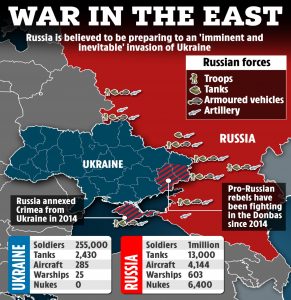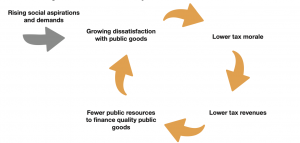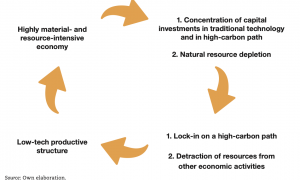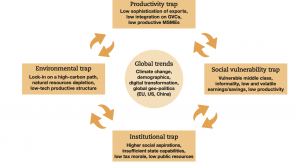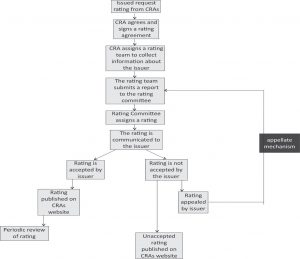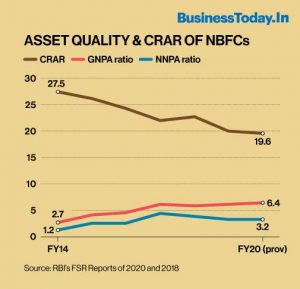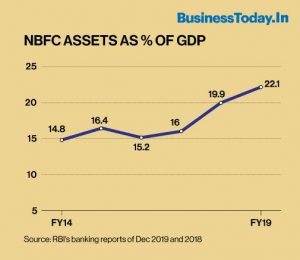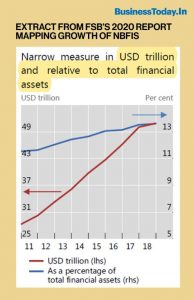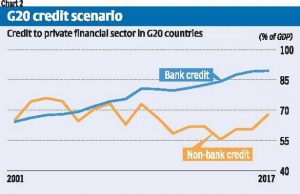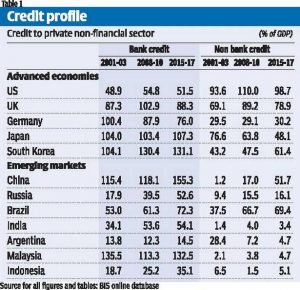RUSSIA-UKRAINE CONFLICT- HOW RUSSIA DRAWS A LINE IN EUROPE?
THE CONTEXT: In February 2021, Russian forces launched a major military attack on Ukraine on the orders of Russian President Vladimir Putin. Tanks and troops have poured into Ukraine at points along its eastern, southern, and northern borders. But why is Ukraine being invaded, and what might Russia want from its neighboring country? This article analyses the issue in detail.
A TIMELINE OF THE EVENT
Russia launched a large-scale invasion of Ukraine on Feb. 24. Here is a timeline of Ukraine’s fraught relationship with Moscow since it won independence in 1991 and the events that led to the current conflict.
- 1991: Shortly after the fall of the Soviet Union, Ukraine declares independence from Moscow.
- 2004: Pro-Russian candidate Viktor Yanukovich is declared President but allegations of vote-rigging trigger protests, known as the Orange Revolution, forcing a re-run of the vote. Pro-Western former prime minister, Viktor Yushchenko, is elected President.
- 2005: Yushchenko takes power with promises to lead Ukraine out of the Kremlin’s orbit, towards NATO and the EU.
- 2008: NATO promises Ukraine it will one day join the alliance.
- 2010: Yanukovich wins a presidential election.
- 2013: Yanukovich’s government suspends trade and association talks with the EU and opts to revive economic ties with Moscow, triggering months of mass rallies in Kyiv.
- February 2014: Parliament votes to remove Yanukovich after bloodshed in the protests. Within days, armed men seize parliament in the Ukrainian region of Crimea and raise the Russian flag. Moscow later annexes the territory.
- April 2014: Pro-Russian separatists in the eastern region of Donbas declare independence. Some 15,000 people have been killed since 2014 in fighting between the separatists and the Ukrainian army, according to the Kyiv government.
- September 2014: Minsk I
- Ukraine and the Russia-backed separatists agreed on a 12-point ceasefire deal in September 2014. Its provisions included prisoner exchanges, deliveries of humanitarian aid, and the withdrawal of heavy weapons. However, the agreement quickly broke down, with violations by both sides.
- February 2015: Minsk II
- Representatives of Russia, Ukraine, the Organisation for Security and Cooperation in Europe (OSCE), and the separatist-held regions Donetsk and Luhansk signed a 13-point agreement in February 2015. The leaders of France, Germany, Russia, and Ukraine gathered in Minsk to mark the occasion and issued a 13-points declaration of support.
- 2017: An association agreement between Ukraine and the EU opens markets for free trade of goods and services and visa-free travel to the EU for Ukrainians.
- 2019: Former comic actor Volodymyr Zelensky is elected President.
- 2021: Zelenskiy appeals to U.S. president Joe Biden to let Ukraine join NATO. In February, his government froze the assets of opposition leader Viktor Medvedchuk, the Kremlin’s most prominent ally in Ukraine.
- Spring 2021: Russia begins massing troops near Ukraine’s borders in what it says are training exercises.
- 2021: Satellite images show an ongoing buildup of Russian forces near Ukraine with estimates soon surpassing 100,000 troops deployed.
- 2017-2021: Russia presents security demands, including NATO pulling back troops and weapons from eastern Europe and barring Ukraine from ever joining.
- 2024-2022: NATO puts forces on standby and reinforces eastern Europe with more ships and fighter jets.
- 2026: Washington responds to Russia’s security demands, repeating a commitment to NATO’s “open-door” policy while offering a “pragmatic evaluation” of Moscow’s concerns. Two days later, Russia says its demands were not addressed.
- 2022: Amid growing Western fears Russia could attack Ukraine, the United States says it will send 3,000 extra troops to NATO members Poland and Romania. Washington and allies say they will not send troops to Ukraine but warn of severe economic sanctions if Russian President Vladimir Putin takes military action.
- 2021: In a TV address, Putin says Ukraine is an integral part of Russian history and has a puppet regime managed by foreign powers. After recognizing them as independent, Putin orders what he called peacekeeping forces into two breakaway regions in eastern Ukraine.
- 2022: The U.S., Britain, and their allies sanction Russian parliament members, banks, and other assets in response to Putin’s troop order. Germany halts the Nord Stream 2 gas pipeline project.
- 2023: Russian-backed separatist leaders ask Russia for help repelling aggression from the Ukrainian army.
- 2024: Putin authorizes “special military operations” in Ukraine. Russian forces begin missile and artillery attacks, striking major Ukrainian cities including Kyiv.
- 2026: Western allies announce new sanctions, including restrictions on Russia’s central bank and expelling key banks off the main global payments system.
CAUSE OF CONFLICT
- Balance of Power: Ever since Ukraine split from the Soviet Union, both Russia and the West have vied for greater influence in the country to keep the balance of power in the region in their favor.
- Buffer Zone for Western Countries: For the US and the European Union, Ukraine is a crucial buffer between Russia and the West. As Ukraine is located between Western Europe and Russia and not part of NATO, it works as a buffer zone.
- As tensions with Russia rise, the US and the EU are increasingly determined to keep Ukraine away from Russian control.
- Russian Interest in the Black Sea: The unique geography of the Black Sea region confers several geopolitical advantages to Russia.
- Access to the Black Sea is vital for all littoral and neighboring states and greatly enhances the projection of power into several adjacent regions.
- The region is an important transit corridor for goods and energy.
- Protests in Ukraine: Euromaidan Movement: European Square was a wave of demonstrations and civil unrest in Ukraine, which began in November 2013 with public protests in Maidan Independence Square in Kyiv, Ukraine.
- The protests were sparked by the Ukrainian government’s decision to suspend the signing of an association agreement with the European Union, instead choosing closer ties to Russia and the Eurasian Economic Union
- Separatist Movement: The Donetsk and Luhansk regions of eastern Ukraine have faced a pro-Russian separatist movement since 2014.
-
- According to various sources, the Russian government actively supports the movement, and Russian paramilitaries make up between 15% to 80% of the separatists fighting against the Ukrainian government.
-
- Invasion of Crimea:
- Russia seized Crimea from Ukraine in what was the first time a European country annexed territory from another country since WW-II
- The annexation of Crimea from Ukraine followed a Russian military intervention in Crimea that took place in the aftermath of the 2014 Ukrainian revolution and was part of wider unrest across southern and eastern Ukraine.
- The invasion and subsequent annexation of Crimea have given Russia a maritime upper hand in the region.
- Ukraine’s NATO Membership: Ukraine has urged NATO to speed up its country’s membership in the alliance.
-
- Russia has declared such a move a “red line”, and is worried about the consequences of the US-led military alliances expanding right up to its doorstep.
- The Black Sea is bordered by Bulgaria, Georgia, Romania, Russia, Turkey, and Ukraine. Romania, Turkey, and Bulgaria are NATO members.
- Due to this faceoff between NATO countries and Russia, the Balck sea is a region of strategic importance & a potential maritime flashpoint.
CURRENT SITUATION
- Russia’s army has captured five cities of Ukraine and major Eastern ports.
- Russian troops are attacking Ukraine on multiple fronts and are advancing on the capital city of Kyiv.
- The Ukrainian Healthcare Ministry reported a total of 752 civilian and military deaths during Russia’s military attack on Ukraine as of February 27, 2022. Of them, 14 were children.
- This has left the countries in a stand-off, with tens of thousands of Russian troops ready to invade Ukraine. More than 1 million people were displaced after the first day of war and taken shelter in nearby countries.
- First round of talk was held in Belarus on 28 February 2022.
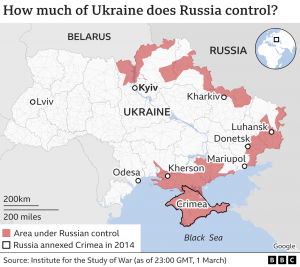
RUSSIA’S STAND
- Russia wants assurance from the West that Ukraine will never be allowed to join NATO. Kyiv is currently a “partner country”, which implies that it will be allowed to join the military alliance in the future.
- The US and its western allies are refusing to bar Ukraine from NATO, claiming it as a sovereign country that is free to choose its own security alliances.
- The Russian President justified the Ukraine crisis on the grounds of security interests and the rights of ethnic Russians in former Soviet Republics.
STAND OF MAJOR WORLD POWERS ON THE ISSUE
- The G7 nations strongly condemned Russia’s invasion of Ukraine.
- Sanctions have been imposed by the U.S., the European Union (EU), the UK, Australia, Canada, and Japan.
- China rejected calling Russia’s moves on Ukraine an “invasion” and urged all sides to exercise restraint.
- India did not join the Western powers’ condemnation of Russia’s intervention in Crimea and kept a low profile on the issue and abstained on a US-sponsored UNSC resolution that “deplores in the strongest terms” Russia’s aggression against Ukraine, with New Delhi saying dialogue is the only answer to settling differences and disputes and voicing “regret” that the path of diplomacy was given up.
- China too abstained, along with the United Arab Emirates (UAE) in the UNSC resolution.
POSSIBLE IMPACTS OF THE RUSSIAN INVASION
THERE COULD BE COLLATERAL DAMAGE FROM SANCTIONS ON RUSSIA:
- In February, President Biden announced economic sanctions on two Russian banks with about $80 billion in assets and five Russian oligarchs and their families, and prohibited U.S. entities from purchasing Russian sovereign debt. More sanctions are expected to follow in the future. Severe U.S. sanctions could drive up prices for everyday Russians or cause Russia’s currency or markets to crash.
ENERGY PRICES COULD RISE:
- At the end of February 2022, crude oil was trading at more than $117 per barrel for the first time since 2014, rising nearly 20% to more than $96 per barrel.
- Russia is a major exporter of oil and natural gas, especially to Europe. As a result, the price of fuel is going up continuously.
- Russia could choose to cut off or limit oil and gas exports to Europe as retaliation for sanctions. Nearly 40% of the natural gas used by the European Union comes from Russia and Germany is the largest importer.
IMPACTS ON OTHER INDUSTRIES:
- Russia is a major exporter of rare-earth minerals and heavy metals such as titanium used in airplanes. Russia supplies about a third of the world’s palladium, a rare metal used in catalytic converters, and its price has soared after
- Ukrainian is a major source of neon, which is used in manufacturing semiconductors.
- Fertilizer is produced in major quantities in both Ukraine and Russia. Disruptions to those exports would mostly affect agriculture in the world and as a result, the price of food could rise.
GLOBAL MARKETS COULD DROP:
- The invasion rattled investors Wednesday, with Dow futures down more than 2% before the markets opened in the United States. Markets across Asia also dropped. The invasion sent the prices of traditional investment safe havens higher, with gold up more than 1.5% on the first night.
- The crisis is deeply impacting the stock market around.
RUSSIA COULD LAUNCH DISRUPTIVE CYBERATTACKS:
- Russia could respond to U.S. sanctions is through cyberattacks and influence campaigns.
- Russian cyberattacks have targeted Ukraine relentlessly in recent years, including attacks on the capital
- Power grids, hospitals, and local governments could all be targets.
A MAJOR INVASION WOULD LIKELY SPARK A REFUGEE CRISIS:
- The invasion could send 1 million to 5 million refugees fleeing Ukraine, as more than one million people were already displaced after the first day of the war.
- Europe and other parts of the world will see another refugee crisis. Poland, which shares a border with Ukraine and is already home to more than a million Ukrainians, would likely see the most refugees.
- At the largest scale, a refugee crisis would not be contained to Europe.
THREAT FOR FURTHER INVASION:
- After the invasion of Russia in Ukraine, China can also gather strength to claim Taiwan and other territorial disputes around the world may occur.
POSSIBLE IMPACTS OF THE RUSSIAN INVASION
THERE COULD BE COLLATERAL DAMAGE FROM SANCTIONS ON RUSSIA:
- In February, President Biden announced economic sanctions on two Russian banks with about $80 billion in assets and five Russian oligarchs and their families, and prohibited U.S. entities from purchasing Russian sovereign debt. More sanctions are expected to follow in the future.
- Severe U.S. sanctions could drive up prices for everyday Russians or cause Russia’s currency or markets to crash.
ENERGY PRICES COULD RISE:
- At the end of February 2022, crude oil was trading at more than $117 per barrel for the first time since 2014, rising nearly 20% to more than $96 per barrel.
- Russia is a major exporter of oil and natural gas, especially to Europe. As a result, the price of fuel is going up continuously.
- Russia could choose to cut off or limit oil and gas exports to Europe as retaliation for sanctions. Nearly 40% of the natural gas used by the European Union comes from Russia and Germany is the largest importer.
IMPACTS ON OTHER INDUSTRIES:
- Russia is a major exporter of rare-earth minerals and heavy metals such as titanium used in airplanes. Russia supplies about a third of the world’s palladium, a rare metal used in catalytic converters, and its price has soared after
- Ukrainian is a major source of neon, which is used in manufacturing semiconductors.
- Fertilizer is produced in major quantities in both Ukraine and Russia. Disruptions to those exports would mostly affect agriculture in the world and as a result, the price of food could rise.
GLOBAL MARKETS COULD DROP:
- The invasion rattled investors Wednesday, with Dow futures down more than 2% before the markets opened in the United States. Markets across Asia also dropped. The invasion sent the prices of traditional investment safe havens higher, with gold up more than 1.5% on the first night.
- The crisis is deeply impacting the stock market around.
RUSSIA COULD LAUNCH DISRUPTIVE CYBERATTACKS:
- Russia could respond to U.S. sanctions is through cyberattacks and influence campaigns.
- Russian cyberattacks have targeted Ukraine relentlessly in recent years, including attacks on the capital
- Power grids, hospitals, and local governments could all be targets.
A MAJOR INVASION WOULD LIKELY SPARK A REFUGEE CRISIS:
- The invasion could send 1 million to 5 million refugees fleeing Ukraine, as more than one million people were already displaced after the first day of the war.
- Europe and other parts of the world will see another refugee crisis. Poland, which shares a border with Ukraine and is already home to more than a million Ukrainians, would likely see the most refugees.
- At the largest scale, a refugee crisis would not be contained to Europe.
THREAT FOR FURTHER INVASION:
- After the invasion of Russia in Ukraine, China can also gather strength to claim Taiwan and other territorial disputes around the world may occur.
INDIA’S POSITION AND STANDING
MILITARY EQUATIONS:
- Moscow makes up about half of India’s total weapons import. India needs Russia to service its arms and joint products, like the Brahmos missile.
- Hence, abandoning Russia is not an option for New Delhi. And at the same time, siding with Russia could incur American sanctions, i.e., CAATSA (The Countering America’s Adversaries Through Sanctions Act).
- The Biden administration is in the process of making a decision on whether to sanction India for its purchase of the S-400 Russian missile systems or to process a waiver, considering the close India-US defense ties.
- If New Delhi openly sides with Russia, then Biden may reconsider imposing sanctions.
CHINA FACTOR:
- China has become the biggest threat for India in recent years—openly acknowledged by Indian Army chief MM Naravane.
- Hence, India needs both Russia and US to counter China.
- America is China’s rival while Russia is an ally. One brings deterrence, whereas the other brings leverage.
- Russia could be effective in tempering China’s aggression and America, on the other hand, will undermine its designs.
- So, it’s a win-win for India. But that advantage disappears if India picks aside.
ECONOMIC FALLOUT:
- The India-Russia bilateral trade is worth $8 billion, while the India-Ukraine trade is worth around only $2.7 billion.
- After the war, supply chains are going to be disruptive. And the one product that will worry India is oil, both as a fuel and cooking oil.
- Last year, India bought 1.8 million tonnes of sunflower oil and 74 percent of that came from Ukraine. So, if a war breaks out cooking oil may become more expensive.
- India is already preparing for this eventuality and new markets are being explored, like Brazil and Argentina.
EXPLAINING INDIA’S POSITION:
- In the UNSC meeting, India abstained, circumventing a perception of supporting the US-led coalition against Russia.
- In the same breath, India also distanced itself from the Beijing Olympics through an official boycott, which in many ways has been projected and perceived as an anti-US as well as an anti-West congregation.
- The two decisions reflect two different assessments of its interests vis-à-vis compulsions of the great power politics on New Delhi.
- While some interpreted India’s absence from the UNSC meets as depicting the limitations of its closeness to the US (alongside tacit support for Russia).
- Its boycott of the Beijing Olympics evinced a coming of age in its strategic autonomy characterized by strong, independent, and interest-based decision-making irrespective of the nature of great power politics at play and the looming risk of antagonizing big powers.
- For India, the decision to carefully weigh on the Ukraine crisis has balanced two strategic necessities:
- Expectations of a close strategic partner in the US; the need to maintain strong ties with Moscow.
- To avoid any perception of proximity to the emerging Sino-Russian axis.
LESSONS FOR INDIA
INDIA, HELP YOURSELF:
- The big takeaway for India from the ongoing Ukraine crisis is that no third country will come to New Delhi’s aid, militarily, in case China forces upon a war. Pakistan is a different case, and India has enough military-strategic depth to counter the western neighbor.
- The Americans are not going to war with China over India. While a lot of global verbal condemnation can be expected in favor of India.
- While Russia has been a close ally of India for decades, Moscow and Beijing are enjoying proximity in the new global scenario.
- Hence, any possibility of the Russians playing an active role on behalf of India cannot be expected. It may very well even abstain from any resolution passed in the United Nations Security Council or the General Assembly, reciprocating India’s position vis a vis Russia on Ukraine.
ATMANIRBHARTA: THE WAY FORWARD:
- The Russia-Ukraine crisis has clearly shown the importance of not being dependent on a second country for military equipment.
- The way ahead is increased focus on enhancing our own capabilities both in terms of spending more on defense and making indigenous equipment. We cannot be relying on a second country to cater to our defense needs, both in terms of war-fighting and equipment.
- The government should strongly push for its R&D in the military and a preference should be given to such products and companies developing systems based on their own research and technology.
FOCUS ON FUTURE TECH:
- The Russia-Ukraine war has also shown how reliance on traditional warfighting machines such as tanks and attack helicopters will not win you battles. This was also evident in the Azerbaijan-Armenia conflict.
- This has primarily been achieved by using armed drones, loitering munitions, and stinger man-portable air defense systems that can easily take out fully equipped and menacing attack helicopters and other aircraft swiftly without much cost.
- The war dynamics have changed and it is important to focus more on new military technology and not waste time in re-inventing the wheel.
THE CONCLUSION: As Indian strategic engagement with the United States has grown in recent years, the Modi government has shifted its reaction to developments in Ukraine ever so slightly. In 2014, the government of then-Indian Prime Minister Manmohan Singh talked about Russia’s “legitimate interests” in Ukraine; today, the Modi government underlines the “legitimate security interests of all countries” in Ukraine. It is keeping in mind our own experience of the neutral or cautious positions that Russia and the US and our other partners, including our neighbors, take on our differences with China and Pakistan, on the impact on our own security of the US/Russian policies in Afghanistan, on the omission of any direct reference to Pakistan on the issue of cross border terrorism, etc. Russia openly criticizes our Indo-Pacific and Quad choices, while the US still courts Pakistan, threatens our defense ties with Russia, and has impaired our ties with Iran.
Questions:
- How far do you agree that the Russia-Ukraine crisis is a collective failure of the international community and is a result of the lethargic approach of the world community? Analyze your view.
- The divide between Russia and the West over Ukraine presents a complicated challenge against India and this time, India needs to be very clear about its position. Do you agree with this view? Argue your view.
- Russia-Ukraine Crisis has many lessons for India and the most important is that India needs to re-invent its foreign policy. Examine the statement.
